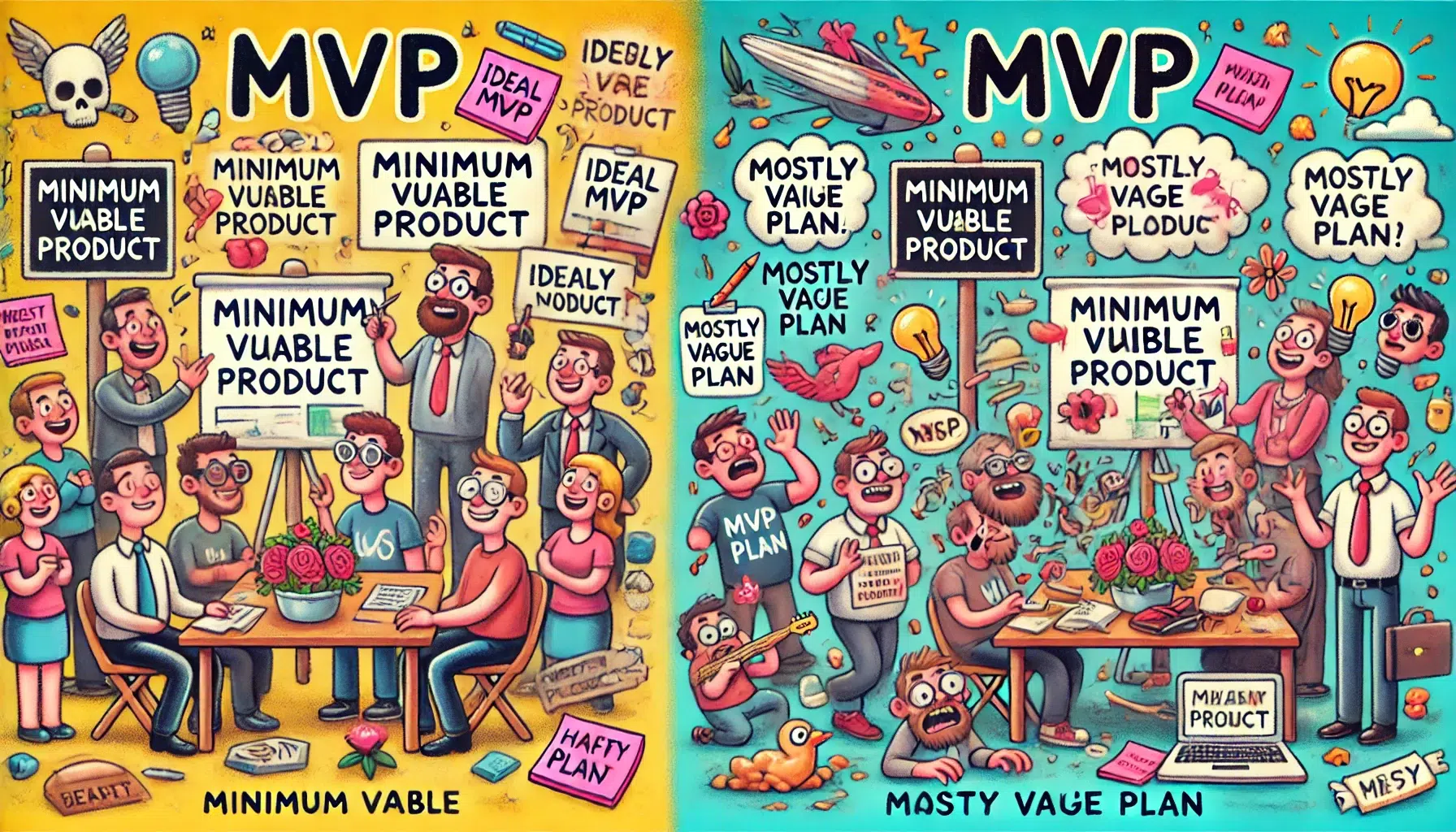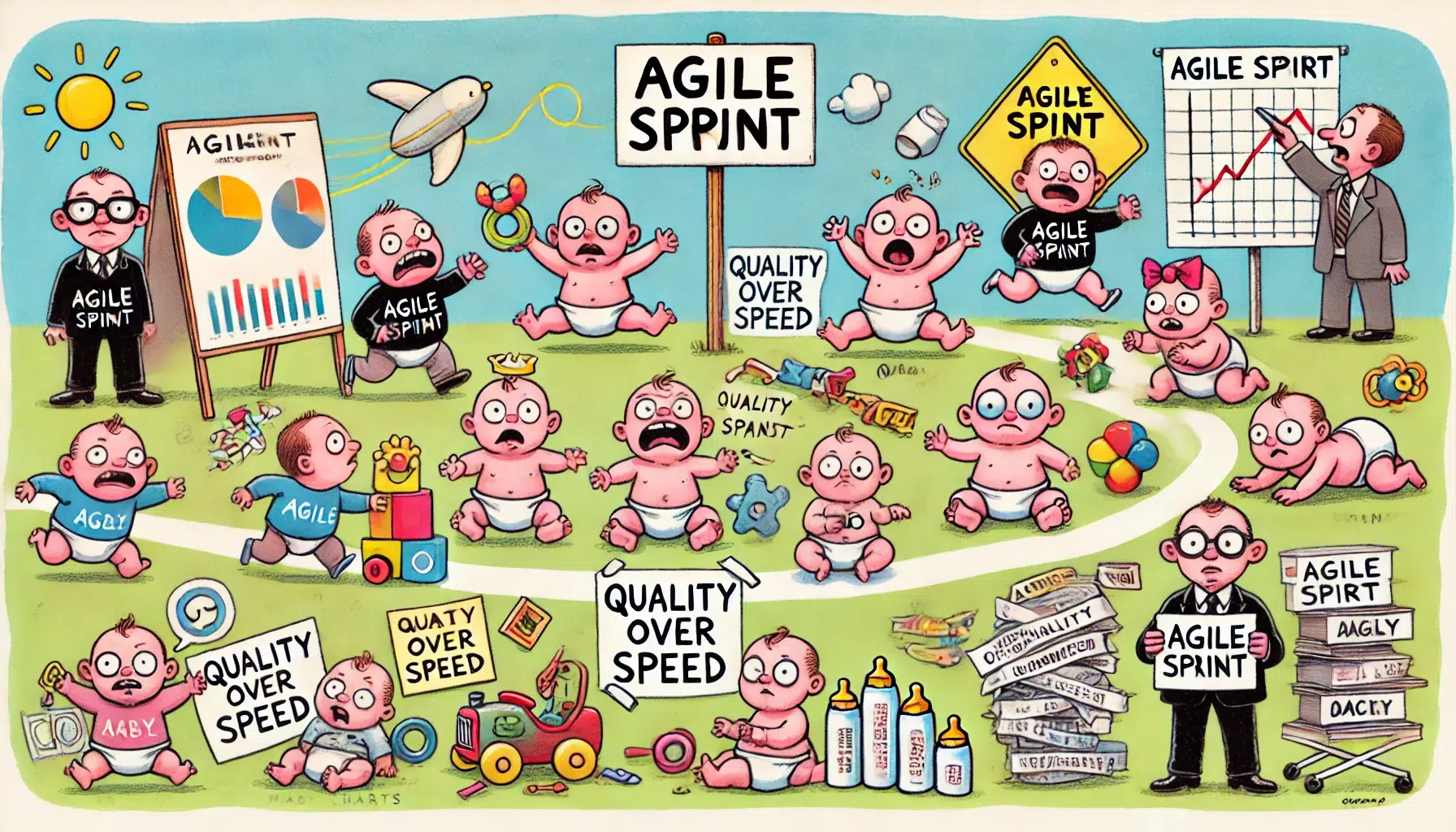
the mvp: minimum viable product or mostly vague plan?
in the dynamic world of product development, the concept of the minimum viable product (mvp) reigns supreme. it’s hailed as the cornerstone of lean startup methodology, a beacon guiding teams to launch fast, learn quickly, and iterate continuously. but, let’s be honest, sometimes the mvp feels less like a meticulously planned strategy and more like a haphazard attempt to cobble together something—anything—that vaguely resembles a product. so, what’s the real deal with mvps? let’s explore this dichotomy with a dash of humor and a sprinkle of insight.
the ideal mvp: a quick refresher
in theory, an mvp is a streamlined version of your product with just enough features to satisfy early adopters and provide feedback for future development. it’s about maximizing learning with the least effort. eric ries, the godfather of the lean startup movement, envisioned the mvp as a tool to test hypotheses quickly and efficiently. the goal? to validate your product idea without wasting time and resources on unnecessary features.
the reality: mvp or mostly vague plan?
despite the noble intentions, many mvps end up looking more like “mostly vague plans.” here’s why:
1. the rush to launch
the pressure to get something out the door can lead to an mvp that’s more about meeting a deadline than meeting user needs. the result? a product that’s missing core functionalities and feels more like a beta test than a viable product.
2. feature paralysis
deciding what makes the cut for an mvp can be paralyzing. do you include that fancy new feature or stick to basics? the fear of leaving something important out can lead to an mvp that tries to do too much, ending up cluttered and confusing.
3. lack of user insight
building an mvp without sufficient user research is like trying to bake a cake without knowing what ingredients you have. you might end up with something edible, but it’s unlikely to be tasty. an mvp should be driven by user needs and feedback, not just by what’s easiest to build.
embracing the mvp mindset
despite these pitfalls, the mvp is not a lost cause. here are some tips to ensure your mvp is a true minimum viable product and not just a mostly vague plan:
1. focus on core value
identify the core value proposition of your product. what problem are you solving? ensure your mvp addresses this fundamental need. everything else is secondary.
2. prioritize user feedback
engage with your users early and often. use their feedback to guide your iterations. remember, the goal is to learn and adapt, not to launch a perfect product right out of the gate.
3. keep it simple
resist the temptation to overcomplicate your mvp. keep it simple and focused. aim for a product that’s easy to use and understand, even if it means leaving out some features you’re excited about.
4. iterate, don’t perfect
the beauty of the mvp is that it’s a starting point, not the final destination. embrace the iterative process. use each version as an opportunity to learn, improve, and grow.
conclusion: the power of the mvp
when done right, an mvp is a powerful tool for innovation. it allows you to test your ideas, gather valuable insights, and make informed decisions. but it’s essential to approach it with the right mindset. focus on delivering real value, engage with your users, and embrace the iterative process. remember, the goal is not to launch a flawless product but to create a foundation for continuous improvement. so, the next time you’re working on an mvp, ask yourself: is this a minimum viable product or just a mostly vague plan? happy building!




